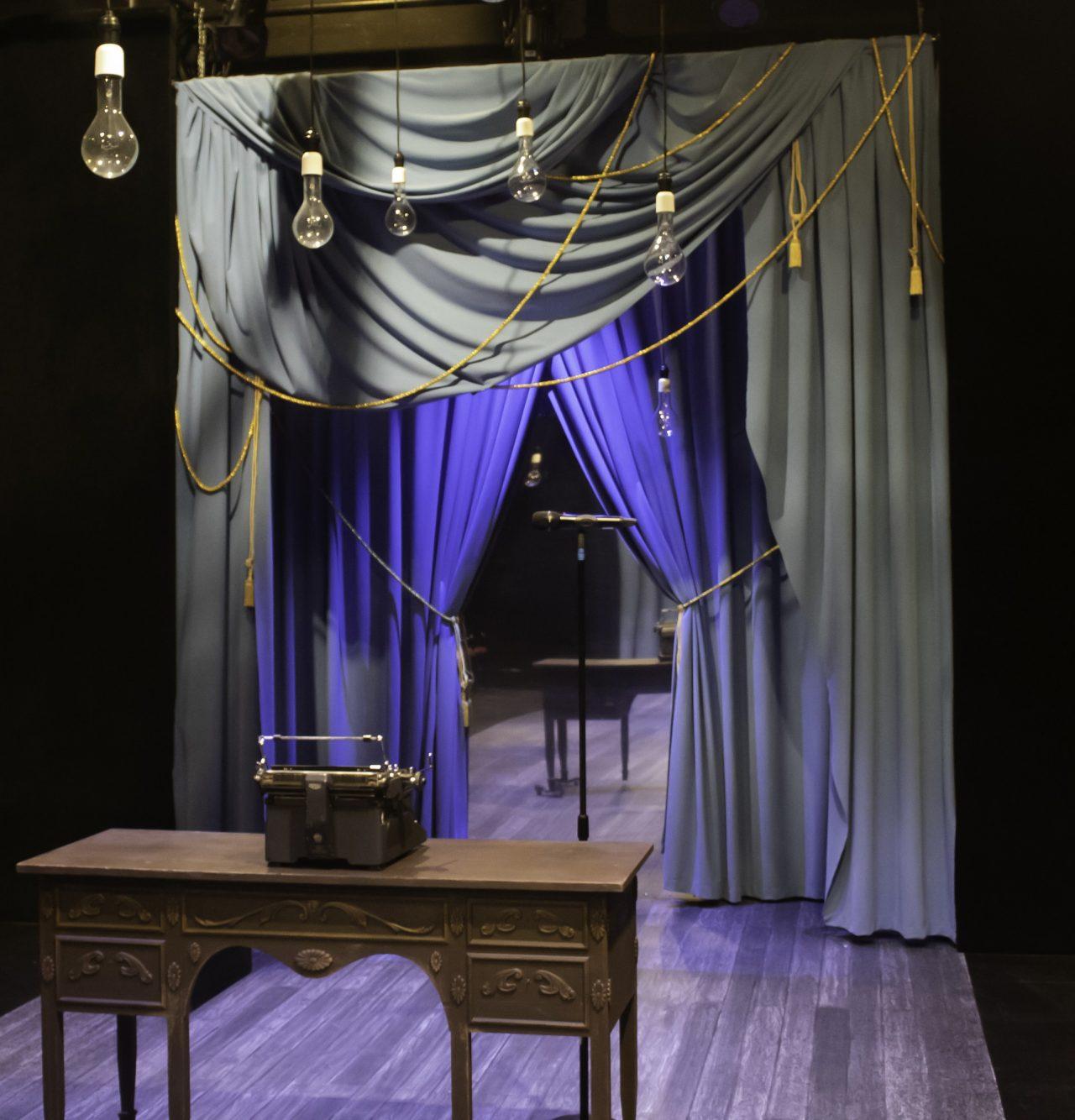Photo by Matthew Claybrook
A forest of florescent lightbulbs dangles from the ceiling, their sparse light sharpening the chairs that surround a rectangular stage.
On one side is a typewriter on a wooden desk, and on the other side is a mirror, surrounded by dark drapes.
Once the play begins, this gothic set is adorned with light and shadow, and as the play progresses, the set evolves like the many actors that dance on its painted surface.
There is a lot to unpack within the Department of Theatre’s latest main stage show “Doctor Faustus Lights the Lights.” From its purposefully unconventional plot to its constantly swirling array of characters, the play has a hypnotic effect on the audience, at times breaking the divide of audience, play and actors to draw viewers into the performance itself.
According to director Rachel Joseph this is due to the play’s author, Gertrude Stein.
“[Stein] talks about theatre as being a kind of landscape and that audiences can be in the continuous present, and so I always thought that theatre was a great place for people to have an encounter together, where the actors are present and the audience is present and something happens in that space, and I thought this play really brought that idea out in so many ways,” Joseph said.
This idea of theater as a landscape, as she discusses in her works, was also on the minds of the actors in the play.
“Landscape theatre is about dealing with an issue with theatre, in that in theatre, people show up and they are thinking about one thing, the actor is thinking about another thing, and the play is something else. This text is trying to get everyone in the space, the play, the audience, the actors, to be in the same moment, so in that being together, it kind of blurs the line of play and audience and it kind of ends up crashing in on itself,” said senior Kerry Madden, an actor in the play.
To emphasize this breaking of barriers, the Stieren Theater, where mainstage shows are traditionally performed, wasn’t optimal. Instead, this show was in the Attic Theater, just above Stieren. Smaller than Stieren, the Attic’s tighter quarters create a more intimate setting where the audience is inches from the stage itself.
With the proper setting, it allows for the play to work its Steinian magic, prodding at a couple of main issues.
“The fluidity of identity,” Joseph said. “How characters get passed from actor to actor and they are always asking, ‘Who am I?’ and so there is this idea of identity being something fluid that is woven into the play. This is also emphasized by the plays working with the relationship of natural things and man-made things.”
Senior Leah Woehr, one of the actors in the play, added to Joseph’s understanding.
“For me, it would be becoming. Because Faustus is figuring himself out, as is shown in a lot of the characters in the show. They are lost in the beginning and they take this journey and end up with a better idea of what their fate is going to be,” Woehr said.
One theme woven throughout was the idea of meta-theatre, enunciated as when Doctor Faustus’s writes lines of dialogue as the play progressed.
“There is an awareness in the play, we took the stage directions from the text and used them in our play … We got to play with that ambiguity a bit in the play,” Joseph said.
“Doctor Faustus Lights the Lights” has four more shows, from Oct. 2–5. They will all be in the Attic Theater.







